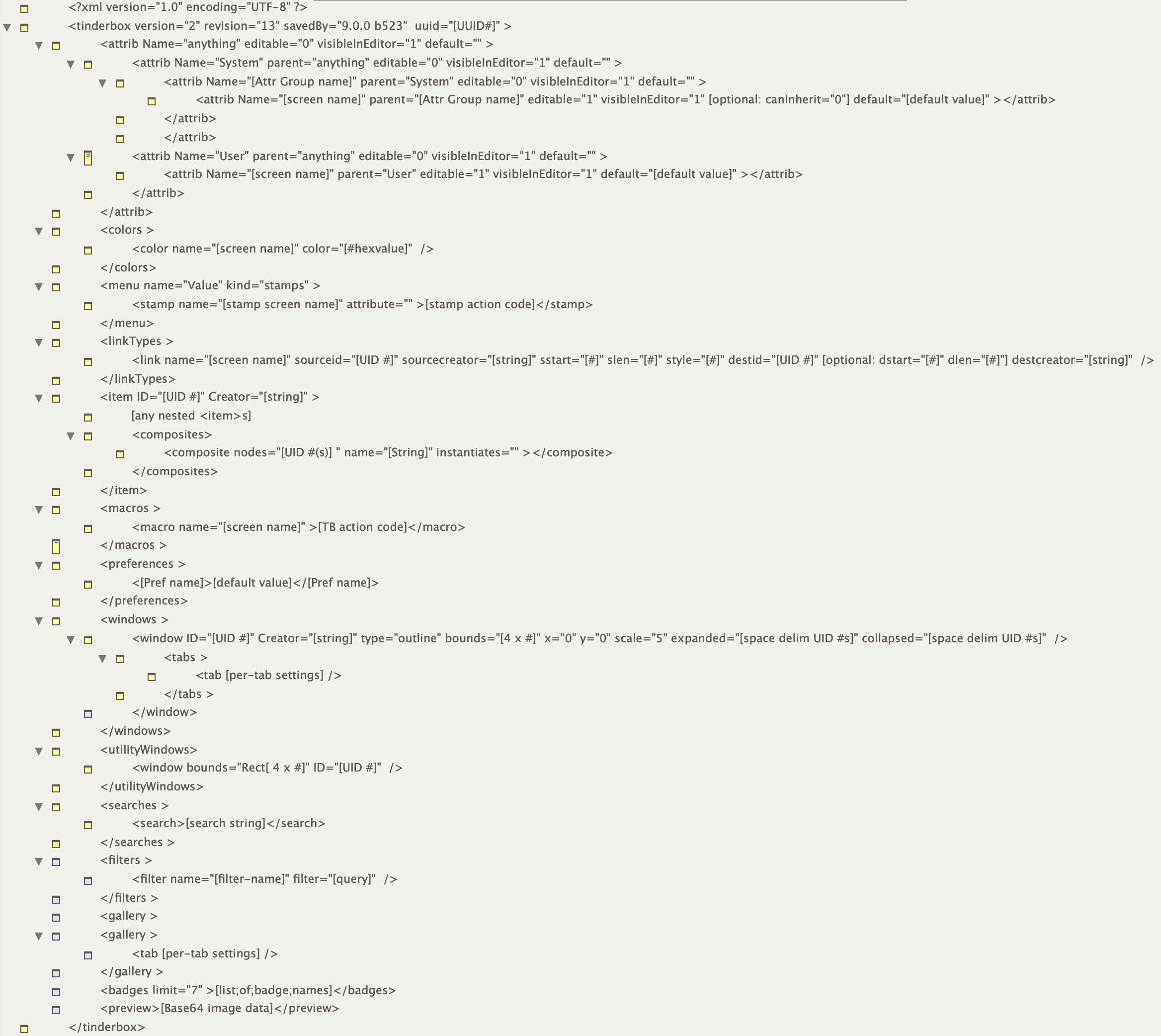This section describes the XML source data in a TBX file.
WARNING. This is not formal vendor documentation of the format. Always work with back-ups. If doing significant interchange to from TBX files via some other workflow you may well need to contact technical support at some point. However, this section should still give you a good overview of the TBX file as used with v6.x of Tinderbox.
Changes to the XML data written occur unannounced (reflecting new/updated features) so this part of aTbRef is likely to lag the XML seen in new TBX.
A TBX file can be opened and read in any competent text.code editing app. The file's data is valid XML in UTF-8 encoding and using Unix-style (line feed character) line endings. Thus much of the data can be read 'by eye' in source from. The only real exception to this is the RTFD versions of notes' text. An un-styled plain text version of the the $Text is stored so can still be read, albeit without stylistic markup.
However, to keep the data file slim, inherited values are not stored for every note. Rather, notes only store intrinsic attributes and those set locally in that note.
This section is structured to read like the TBX data structure with similar nesting of notes. When reading this, it is useful to also open a TBX in your code editor for reference.
Note that in general, tags write their internal tag attributes in the same order in each case (not the case in early versions of the app), though you may still discover otherwise, so treat that assumption as tentative.
The top level objects of the XML (TBX) file:

